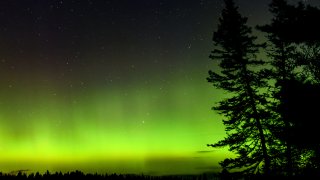
Every glimmer of the northern lights begins as a spot on the sun’s surface. And if increased solar activity is any indication, the next year and a half will be filled with glimmers.
Sunspot observations, a key indicator of the likelihood of northern lights, have increased dramatically since the end of 2022, surpassing recent forecasts and in some cases increasing the area the phenomenon is visible from. Scientists say that if the trend continues, the next 18 months will bring the strongest northern lights activity of both the coming decade and the past 20 years, with the show being viewable more often and from more places on Earth.
“Skywatchers are excited,” said Mark Miesch, a research scientist at the University of Colorado - Boulder and the National Oceanic and Atmospheric Administration.
The Solar Cycle 25 Prediction Panel, an international scientific group sponsored by NASA and NOAA that forecasts sunspot activity, forecast in 2019 that the coming year would be below-average, with around 110 to 115 sunspots at its peak. But updated models from multiple scientists show the increase in solar activity could be much higher.
Get Tri-state area news and weather forecasts to your inbox. Sign up for NBC New York newsletters.
Read the full story on NBCNews.com here.

